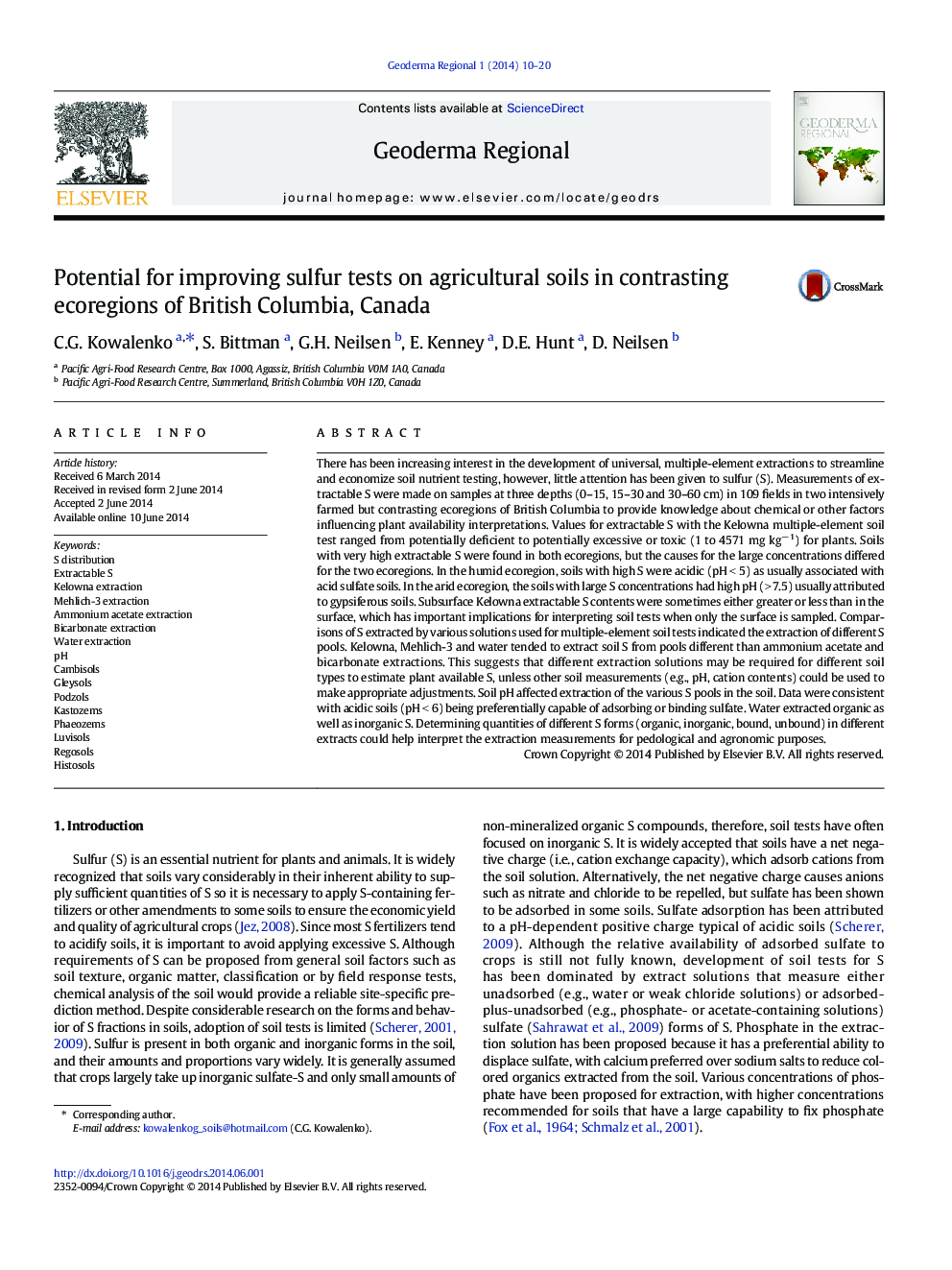| کد مقاله | کد نشریه | سال انتشار | مقاله انگلیسی | نسخه تمام متن |
|---|---|---|---|---|
| 4480821 | 1623013 | 2014 | 11 صفحه PDF | دانلود رایگان |
There has been increasing interest in the development of universal, multiple-element extractions to streamline and economize soil nutrient testing, however, little attention has been given to sulfur (S). Measurements of extractable S were made on samples at three depths (0–15, 15–30 and 30–60 cm) in 109 fields in two intensively farmed but contrasting ecoregions of British Columbia to provide knowledge about chemical or other factors influencing plant availability interpretations. Values for extractable S with the Kelowna multiple-element soil test ranged from potentially deficient to potentially excessive or toxic (1 to 4571 mg kg− 1) for plants. Soils with very high extractable S were found in both ecoregions, but the causes for the large concentrations differed for the two ecoregions. In the humid ecoregion, soils with high S were acidic (pH < 5) as usually associated with acid sulfate soils. In the arid ecoregion, the soils with large S concentrations had high pH (> 7.5) usually attributed to gypsiferous soils. Subsurface Kelowna extractable S contents were sometimes either greater or less than in the surface, which has important implications for interpreting soil tests when only the surface is sampled. Comparisons of S extracted by various solutions used for multiple-element soil tests indicated the extraction of different S pools. Kelowna, Mehlich-3 and water tended to extract soil S from pools different than ammonium acetate and bicarbonate extractions. This suggests that different extraction solutions may be required for different soil types to estimate plant available S, unless other soil measurements (e.g., pH, cation contents) could be used to make appropriate adjustments. Soil pH affected extraction of the various S pools in the soil. Data were consistent with acidic soils (pH < 6) being preferentially capable of adsorbing or binding sulfate. Water extracted organic as well as inorganic S. Determining quantities of different S forms (organic, inorganic, bound, unbound) in different extracts could help interpret the extraction measurements for pedological and agronomic purposes.
Journal: Geoderma Regional - Volume 1, September 2014, Pages 10–20
